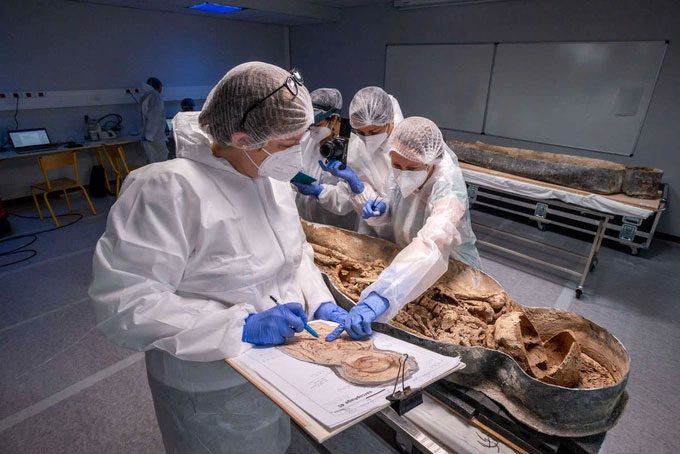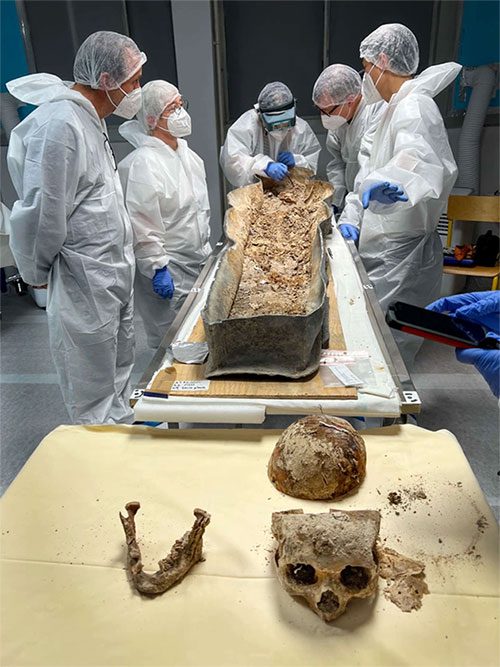Two lead coffins were unearthed by archaeologists during the restoration of the crypt and spire of Notre-Dame Cathedral in Paris, following the fire in 2019.
The fire at Notre-Dame Cathedral in France in 2019 caused extensive architectural damage to the iconic structure. During the restoration efforts, archaeologists discovered numerous graves, coffins, and other artifacts beneath the site.

Archaeologists analyzing the remains found in the lead coffin unearthed within Notre-Dame Cathedral. (Photo: Denis Gliksman).
Since then, researchers from the French National Institute for Preventive Archaeological Research (Inrap) have been conducting in-depth analyses to uncover the identities of the remains.
According to their findings, the two lead coffins contain the remains of a famous canon and an anonymous nobleman.
Researcher Christophe Besnier, who led the excavation, stated: “The first lead coffin discovered dates from the mid-14th century to the late 17th century. It contains the remains of a nobleman who was embalmed upon his death.”
Analysis of these remains indicates that the individual was a man aged between 25 and 40, who had learned to ride horses from a young age, exhibited slight cranial deformity, and possibly suffered from tuberculosis.
Anthropologist Eric Crubery from the University of Toulouse II recalled: “This will be an important skeleton. Because at that time, only about 4% of the nobility had the opportunity to be embalmed or placed in a lead coffin upon death.”
Regarding the second coffin, researchers found that it contained several valuable artifacts, including a Latin inscription, three medals, a text in French engraved on metal, and another plaque referencing Canon Antoine de La Porte (1627-1710), a bishop who held high office for over 50 years.
His remains were also found in this coffin, and he currently has a portrait preserved at the Louvre Museum in France.
Notably, this bishop was a patron and possessed a substantial personal fortune. He commissioned three paintings to decorate Notre-Dame Cathedral, currently preserved in the Louvre Museum. He also donated £10,000 to upgrade the choir section of Notre-Dame while he was serving there.

Researchers extracting remains from the coffin. (Photo: Denis Gliksman).
Analysis of the remains indicates that burials within cathedrals were common throughout the medieval and modern periods. Typically, the deceased were interred near choir sections or the burial sites of bishops and archbishops.
Christophe Besnier noted: “Over 300 individuals have been buried at Notre-Dame Cathedral, and this type of burial was reserved for the elite, as lead coffins at that time were very expensive.”
Additionally, approximately 200 samples taken from these remains will require further in-depth analysis before being handed over to the French Ministry of Culture.





















































